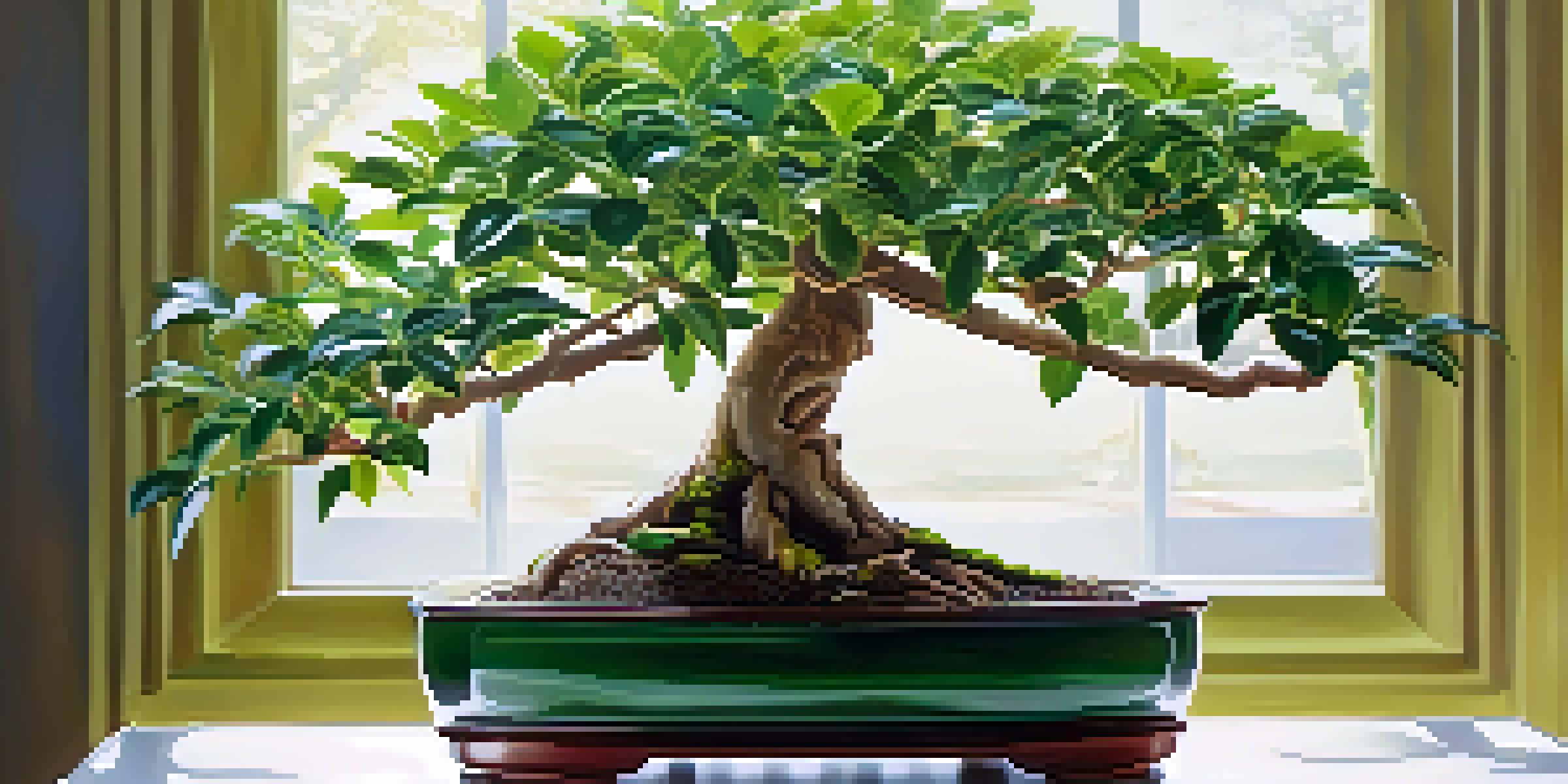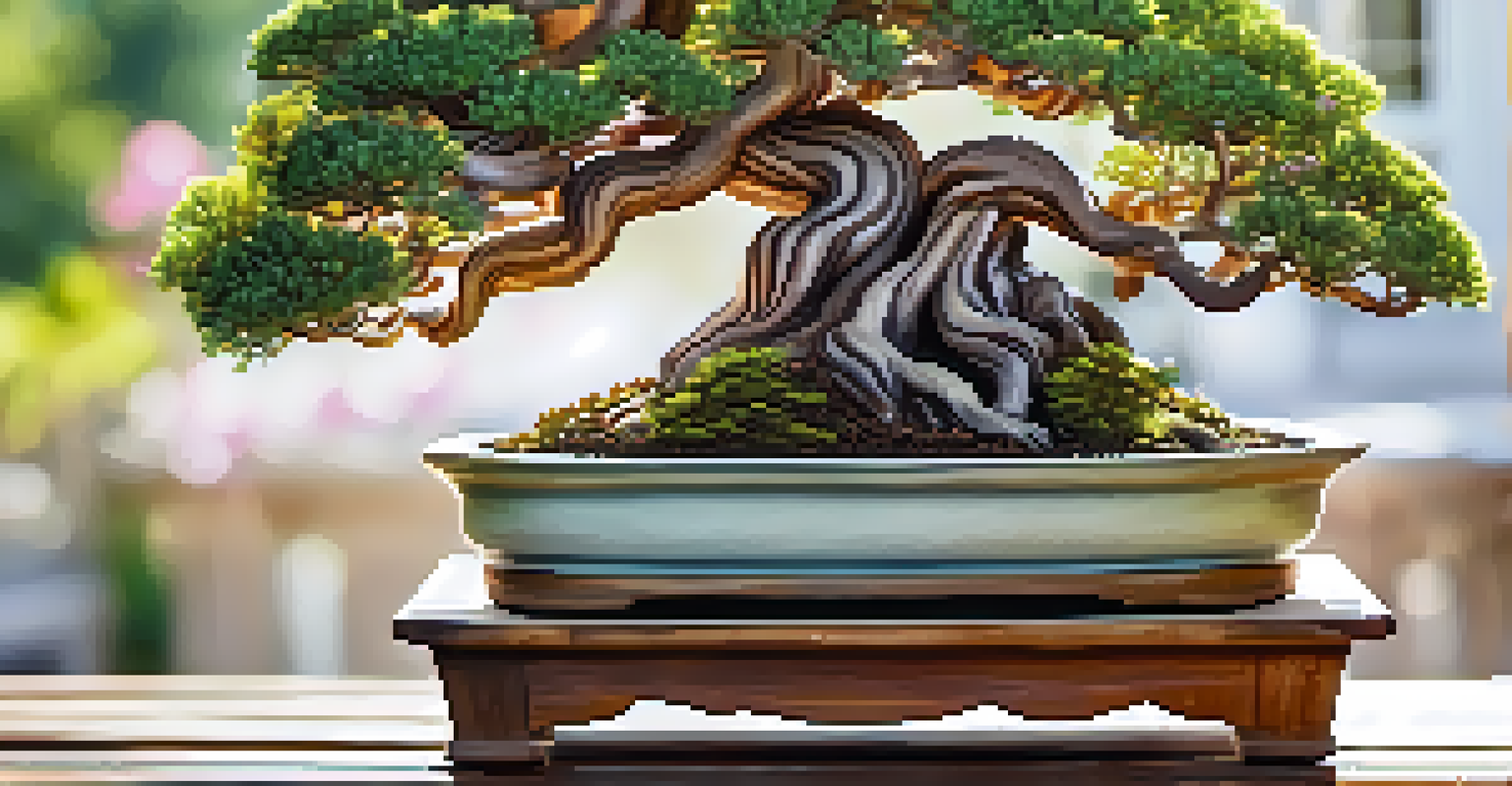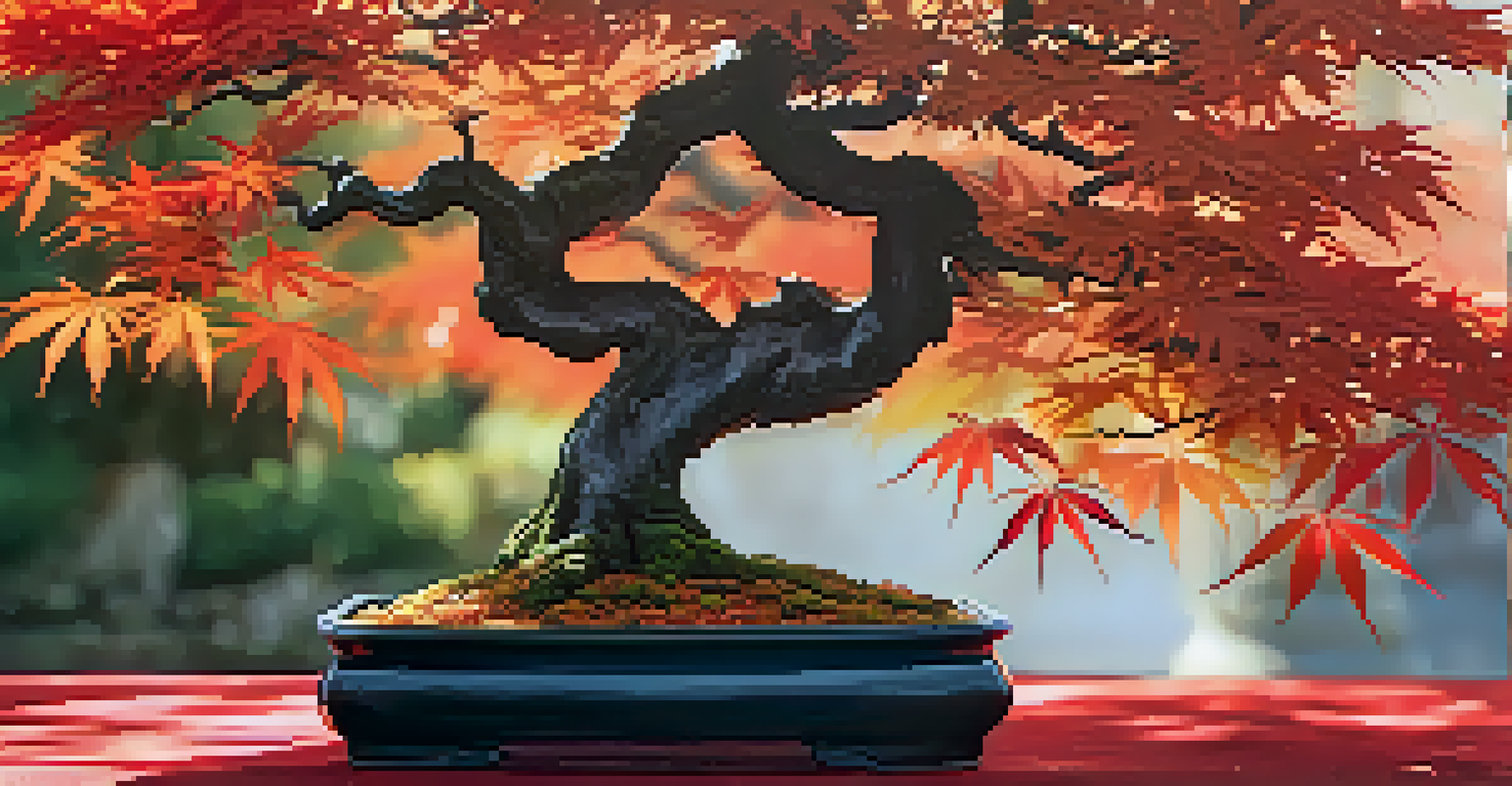Popular Bonsai Species and Their Unique Requirements

Ficus Bonsai: The Hardy Favorite for Beginners
Ficus bonsai trees are a popular choice for beginners due to their resilience and adaptability. With their glossy leaves and flexible branches, they can be shaped into various styles, making them visually appealing. Ficus trees thrive in indoor environments, requiring bright, indirect light and regular watering to keep the soil slightly moist.
The best time to plant a tree was twenty years ago. The second best time is now.
One of the key benefits of the Ficus bonsai is its ability to tolerate neglect, which is ideal for novice gardeners. They can handle a range of humidity levels and are less susceptible to common pests, making them easier to maintain. However, they do appreciate occasional pruning, which encourages bushier growth and helps maintain their desired shape.
Overall, Ficus bonsai trees offer an excellent starting point for those new to the art of bonsai. Their forgiving nature and stunning appearance create a fulfilling experience for beginners, helping them build confidence as they care for their plants. Plus, with proper attention, these trees can flourish for decades.
Juniper Bonsai: The Classic Outdoor Specimen
Juniper bonsai trees are a classic choice for outdoor bonsai enthusiasts, known for their rugged beauty and unique foliage. They come in various species, with the Juniperus procumbens being particularly popular for bonsai. These trees thrive in full sun and prefer well-draining soil to prevent root rot.

When caring for Juniper bonsai, it’s essential to mimic their natural environment. They enjoy outdoor settings where they can experience seasonal changes and natural rainfall. Regular pruning helps maintain their shape, while wiring techniques can be used to create stunning branch formations.
Ficus Bonsai: Ideal for Beginners
Ficus bonsai trees are resilient and forgiving, making them perfect for novice gardeners.
Although Junipers are hardy, they can be sensitive to overwatering, so it's crucial to let the soil dry out between watering sessions. Their beautiful, evergreen foliage can add a touch of nature to any outdoor space, making them a favorite among bonsai collectors. With some patience and care, Juniper bonsai can become a stunning centerpiece in your garden.
Chinese Elm: A Versatile Indoor and Outdoor Choice
The Chinese Elm is celebrated for its versatility, thriving both indoors and outdoors. This species is known for its small, serrated leaves and graceful branching patterns, making it a favorite among bonsai enthusiasts. They can adapt to a variety of light conditions, although bright light is preferred for optimal growth.
Nature does not hurry, yet everything is accomplished.
Chinese Elms are relatively low-maintenance, which adds to their charm. They are tolerant of a range of temperatures and humidity levels, making them suitable for different living environments. Regular watering is essential, but be careful not to let the soil become waterlogged, as this can lead to root issues.
Pruning and shaping are vital to maintaining the aesthetic appeal of a Chinese Elm bonsai. Their growth can be encouraged through seasonal trimming, ensuring that they remain lush and vibrant. With their adaptability and stunning appearance, Chinese Elms are a rewarding choice for bonsai lovers.
Japanese Maple: A Stunning Showstopper
Japanese Maple bonsai trees are renowned for their breathtaking foliage, which changes color beautifully with the seasons. These trees exhibit stunning red, orange, and yellow leaves in autumn, making them a focal point in any collection. They prefer partial shade to protect their delicate leaves from scorching sunlight.
Caring for a Japanese Maple requires attention to detail, especially when it comes to watering. These trees thrive in well-draining soil that retains some moisture but does not become soggy. It's vital to monitor their hydration levels and provide ample humidity, particularly in dry climates.
Juniper: Classic Outdoor Choice
Juniper bonsai thrive in outdoor settings and require minimal maintenance with proper watering.
Pruning is also essential for Japanese Maple bonsai, as it encourages a more refined shape and promotes healthy growth. While they may require a bit more care than other species, the reward is well worth it. Their stunning visual appeal can elevate any bonsai collection and create a lasting impression.
Pine Bonsai: A Symbol of Longevity and Resilience
Pine bonsai trees, particularly the Japanese Black Pine, are symbols of longevity and resilience in bonsai culture. Their unique needle-like leaves and rugged bark contribute to their classic bonsai aesthetic. Pines thrive in full sunlight, making them perfect for outdoor cultivation.
One of the most fascinating aspects of Pine bonsai is the aging process, where the tree develops beautiful patterns and textures over time. Regular pruning and wiring are essential to shape the tree and encourage new growth. Remember to provide well-draining soil to prevent excess moisture around the roots.
Pine bonsai care involves balancing watering needs; they prefer to dry out a bit between watering sessions. With their majestic presence and storied lineage, Pine bonsai trees can be a rewarding project for enthusiasts willing to invest time and effort. Their timeless elegance adds a serene touch to any bonsai collection.
Azalea Bonsai: A Vibrant Floral Delight
Azalea bonsai trees are cherished for their stunning blooms and vibrant colors, making them a showstopper in any bonsai collection. These flowering trees prefer bright light but can benefit from some shade during the hottest parts of the day. Regular watering is crucial, especially during the blooming season, to keep them healthy.
One unique requirement of Azalea bonsai is the need for acidic soil, which supports their growth and flowering. Using specific bonsai soil mixes designed for acid-loving plants can make a significant difference. Additionally, proper fertilization during the growing season encourages lush foliage and abundant blooms.
Caring for Bonsai Requires Dedication
Successful bonsai care involves understanding each species' unique needs and enjoying the cultivation process.
Pruning Azalea bonsai should be done carefully to maintain their shape and encourage new flowering growth. Their vibrant colors and delightful fragrances make them a favorite among bonsai enthusiasts. With the right care, an Azalea bonsai can bloom beautifully each year, bringing joy to its caretaker.
Bougainvillea: A Colorful and Resilient Choice
Bougainvillea bonsai trees are known for their vibrant bracts that create a sea of color, making them a popular choice for bonsai lovers. Their bright pink, purple, and orange hues can transform any space into a tropical paradise. These plants thrive in sunny conditions and require well-draining soil for optimal health.
When caring for Bougainvillea bonsai, it's important to allow the soil to dry out between waterings, as they are susceptible to root rot. Regular pruning encourages bushier growth and helps maintain their compact shape. They also respond well to wiring, allowing for creative shaping.

Bougainvillea bonsai can be a bit picky about their environment, preferring warm temperatures and plenty of sunlight. With their stunning colors and unique texture, these bonsai trees can be a fantastic addition to any collection. Their resilience and beauty make them a rewarding project for dedicated hobbyists.
Caring for Your Bonsai: General Tips for Success
Caring for bonsai trees requires a blend of knowledge, patience, and dedication. Each species has its own unique needs, so understanding these requirements is essential for success. Regular watering, appropriate light conditions, and fertilization are the foundation of healthy bonsai care.
Pruning and shaping your bonsai not only promotes growth but also enhances its aesthetic appeal. Use proper techniques and tools to make clean cuts, ensuring the health of the tree. Additionally, monitoring for pests and diseases can help you catch potential issues before they become severe.
Lastly, remember that bonsai is an art as much as it is horticulture. Enjoy the process, and don’t be afraid to experiment with different techniques. With time and care, your bonsai will not only thrive but also become a cherished part of your home, reflecting your journey as a gardener.